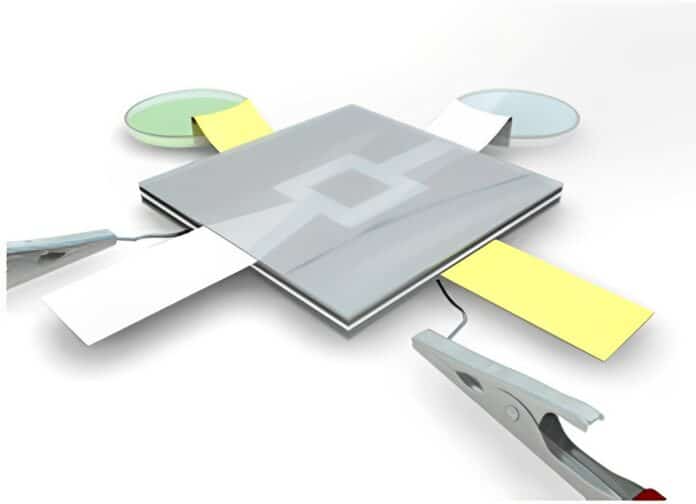A fuel cell is a device that converts chemical energy into electricity from fuel. It converts energy through a chemical reaction of positively charged hydrogen ions with oxygen. Unlike batteries, a fuel cell requires a constant fuel source and oxygen or air to maintain the chemical reaction. Fuel cells can generate electricity constantly for as long as these inputs are supplied.
Scientists from the Iowa State University in Ames, IA, recently developed a 3D paper-based microbial fuel cell (MFC). This 3D paper-based microbial fuel cell can take the benefit of capillary action to instruct the liquids through its system. It also can remove the requirement for extrinsic power. For five days, this paper-based MFC works and shows generating current as the output of biofilm formation on the anode. The system generates 1.3 μW of power and 52.25 μA of current.
It consists of a power density of almost 25 W/m3 for this experiment. The result proves that paper-based microbial fuel cells generate power in an eco-friendly way without using any outside power.
Nastaran Hashemi, Ph.D., Assistant Professor of Mechanical Engineering, “Complete power generated in this device is usable because no electricity is required to run the fluid through the device. This is crucial in the advancement of these devices and the expansion of their applications.”
The biofilm generation on carbon cloth during the test proves that the current measured resulted from the biochemical reaction. This is essential because the biofilm plays an important role in generating a current of a microbial fuel cell. Sometimes, expanded biofilm size and thickness lead to increased current production. Different bacterial cells absorb electron-rich substances in a complicated process by adding many enzyme-catalyzed reactions. Then electrons are free to travel to the anode through one of many modes of electron transport.
The transmission of electrons is very complicated, and the output suggests this is a unique kind of bacteria. According to Shewanella Oneidensis MR-1, direct contact is the most popular way for commuting electrons from the different bacterial cells to the anode. (Shewanella Oneidensis is a bacterium that can decrease poisonous heavy metal ions and live in both environments with or without oxygen).
It then discharges dissolved redox molecules and biological nanowires. Although, it is proof that direct contact between different S. Oneidensis MR-1 and the electrode has little effect on the current generation. It supports a resolved electron removal mechanism. Biofilm supports by absorbing the redox molecules to the electrode. It makes microbial fuel cells essentially have high power density.
There are few studies on generating power from paper-based microbial fuel cells, which run for a few days. Without much time to create a biofilm, the reported current and power data would especially combine with supplementary electron transfer.
It does not fully represent the electrical generating abilities of microbial fuel cells. For the first time, this device illustrates the longer duration of use and ability to operate separately. This demonstration could help to expand the number of situations where microbial fuel cells can be applied.
Currently, the team is investigating options for managing the voltage output and creating a stable current. Controlled environment tests will support the management of the system’s output and yield more stable results. For excellent use and a decrease in cost, the team would also like to find a device that will not require using Nafion and Potassium Ferricyanide in its application.
Journal Reference
- Niloofar Hashemi, Joshua M. Lackore, Farrokh Sharifi, Payton J. Goodrich, Megan L. Winchell, Nastaran Hashemi. A paper-based microbial fuel cell operating under continuous flow condition. TECHNOLOGY, 2016; 04 (02): 98 DOI: 10.1142/S2339547816400124
